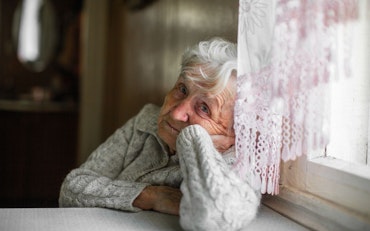An unknown number of Australians live with post-viral conditions
Could you be living with post-viral conditions?
![<p>Post-viral symptoms are similar to symptoms observed in other conditions. Medical professionals are expected to investigate and rule out those other conditions first. [Source: Shutterstock]</p>](https://agedcareguide-assets.imgix.net/news/articles/wp/needle2907.jpg?fm=pjpg&format=auto&w=550&q=65)
Post-viral symptoms are similar to symptoms observed in other conditions. Medical professionals are expected to investigate and rule out those other conditions first. [Source: Shutterstock]
Key points:
- ‘Long-COVID’ is an umbrella term for ongoing symptoms in the medium-term — from four to 12 weeks — and longer-term sequelae beyond 12 weeks, known as post-COVID syndrome
- According to the Australian Institute of Health and Welfare, global reports on the number of people to experience long-COVID, following infection, vary from nine to 81 percent
- Although there is currently no definitive data on the prevalence of those experiencing post-polio, it is estimated that tens of thousands of individuals are either affected or at risk of developing the condition
SPONSORED — Up to 81 percent of people may have experienced long-COVID after being infected with COVID-19 during the global pandemic.
Some people experience prolonged symptoms associated with COVID-19, which can negatively affect daily life and health outcomes.
However, the number of people affected could be as low as nine percent of people as there is variance in the global data range.
These results indicate that it’s not clear how many people have been affected by long-COVID.
Long-term effects of the COVID pandemic are still being uncovered as the first COVID-19 case was reported in Australia less than five years ago. Health professionals are still learning about long-COVID and are searching for the best course of treatment.
Symptoms may include:
- difficulty sleeping;
- memory and concentration issues;
- muscle and joint pain;
- shortness of breath; and
- chest pain.
While most people recover from COVID-19 within a couple of weeks from initial infection, long-COVID and post-COVID symptoms can last for many weeks and months.
Long-COVID has also been associated with newly diagnosed conditions such as kidney disease, neurological conditions and heart disease.
You have likely heard about or perhaps experienced long-COVID, but there are other such conditions for which awareness remains very low.
Acute polio was circulating in epidemic patterns across Australia, seventy years before the COVID-19 pandemic. It was a time of fear and uncertainty until a vaccine was developed and made available in Australia in the late 1950s.
For those who were symptomatic with polio — viral symptoms or worse — the challenges of the acute illness were not the end of their polio experience.
Post-polio conditions are a present-day challenge as many individuals experience delayed long-term effects decades after their initial polio infection. It is one post-viral condition for which awareness remains low.
Families and communities need to recognise post-polio signs and risks, because some people may not know they have the condition.
Understanding that post-polio conditions can emerge decades after any acute polio infection is a crucial part of ensuring that awareness and health literacy persist on post-viral conditions like long-COVID.
One of the major hurdles in addressing post-polio conditions is the presence of widespread misconceptions. Many people confuse post-polio conditions with acute polio, thinking they are much the same thing, which is like thinking chickenpox — from the varicella virus — is the same condition as shingles — another post-viral condition. However, clinical knowledge, patient experiences and health research assert that post-viral conditions are distinct conditions.
Acute polio was the initial viral infection that caused varied, lasting and often hidden damage in numerous body systems. Post-polio conditions are the long-term effects of that damage, appearing and progressing chronically years later without a cure.
There is a lot at stake for the quality of life of those with post-polio conditions, and many future unknowns for those who had neurological symptoms with the COVID-19 infection.
By breaking through this major misconception, we can improve awareness and support for those with post-viral conditions in Australia.
It is also important to know that in the case of polio, not everyone who contracted it showed signs of paralysis. If you or a loved one experienced flu-like symptoms or worse during any polio epidemic, you could be at risk for post-polio conditions.
Post-polio presents as progressive asymmetrical muscle weakness, fatigue and complex pain. Exercise intolerance and poor sleep are common, as they are with many post-viral conditions.
This kind of knowledge, paired with early recognition and support, is crucial to identifying and managing these symptoms, in addition to the mobility and activity difficulties that result.
Information like this will become more concise for long-COVID as we get years beyond the pandemic infection period.
Join Polio Australia in raising awareness about post-viral conditions and use what the organisation knows about post-polio as a foundation on this topic.
Share and discuss this information with those in your community. Encourage healthcare providers to screen for post-viral conditions like post-polio — especially in older adults who may have been quite sick with a virus decades ago.
A screening tool for polio exposure and assessing post-polio risk can be found on the Polio Australia website.
Post-polio is a living reality for many Australians, and the future of those who had quite intense COVID-19 symptoms is unknown. It’s essential to bridge the gap between history and present-day healthcare.
Together, we can improve your community’s ability to reliably identify those experiencing post-polio challenges. For more information, contact Polio Australia at 03 9016 7678 or email contact@polioaustralia.org.au.
Have you experienced post-viral conditions and how long have you been impacted by their symptoms?
Let the team at Talking Aged Care know and subscribe to the newsletter for more information, news and industry updates.
Related content:
Polio effects surfacing decades later due to ageing
Up to 94 percent of older Australians aren’t meeting these health recommendations — are you?
With limited time left, 40,000 Australians miss out on suitable care










